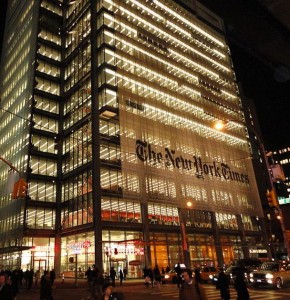Utilizing daylight to save electricity is a seemingly obvious thing, but few office buildings do it
The New York Times Company Saves energy in its 52-story headquarters building with the oldest lighting technology in the world: the sun. The windows, which stretch from the floor to the ceiling, allow sunlight to pour in and sensors accordingly dim the artificial lighting in the building to save electricity. Compared to other buildings in New York, the Times Building has reduced its electricity consumption by 24%, notes a new report from the US Lawrence Berkeley National Laboratory (LBNL).
The energy consumed for lighting, cooling and ventilation of buildings in the world's cities causes about 40% of the world's carbon dioxide emissions, the main greenhouse gas that causes climate change. Increasing the use of sunlight seems like an obvious and obvious solution, but it turns out that this solution is more complicated than it seems at first glance. A modern building in a city like New York needs special glazing that prevents glare and shading that blocks at least part of the sunlight, so that the workers in the building can see the content displayed on their computer screens.
An energy-efficient system requires dimmable lighting fixtures that are automatically adjustable, inexpensive, long-lasting, and easy to maintain, and it also requires software and computer hardware to operate these lighting fixtures. It is also necessary that the users of the building like the system, or at least that it should be easy to operate in their opinion. Fitting the 20 office floors of the Times Building with daylighting measures was "the largest direct purchase of shading and lighting technologies in US history," the LBNL report said.
35 years ago, LBNL's construction guru, Stephen Zelkovitch, began preaching the increased use of sunlight. But since then the trend has been in the opposite direction. "They failed to expand the technology," he says, meaning that the lessons learned in one building were not applied to similar buildings in other cities.
The Times Building also demonstrates these difficulties. The New York Times Company itself occupies a little less than half of the building, which has an area of about 150,000 square meters, and not all the other tenants chose to use the new technology, which costs 20 cents to one dollar per square meter of office space.
But these expenses lead to savings. According to Zelkovich's analysis, the investment made by the New York Times Company saves it approximately $13,000 per year per floor. It took three years to pay back the cost of the equipment, and since then the company has only been saving. "It's not bad at all," he says.
However, due to new buildings being built to the north and west, the elaborate system now has to adapt to the unexpected glare from the new windows of the neighbors. In the end, even though sunlight seems easy to exploit, "you can't get up one morning and decide you're doing it yourself," in the words of Zelkovich.




2 תגובות
Noam, it all depends on the sun. Most of the heat provided by the sun originates from an invisible wavelength - infrared to microwave. There are windshields (for example in the expensive BMW and Mercedes vehicles and other vehicles today) that mainly transmit light in the visible area and absorb and/or reflect light in the "warming" areas. I assume the windshields in question use technology of this variety, otherwise how do you explain the savings the building achieves? (In your opinion, the building should have suffered losses as a result of increased use of air conditioning - a more serious energy consumer than lighting).
The sun's rays have the side effect that they also heat up, an undesirable phenomenon in the summer.
Isn't modern lighting, which uses LEDs that consume little electricity, preferable?